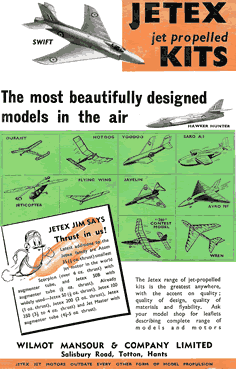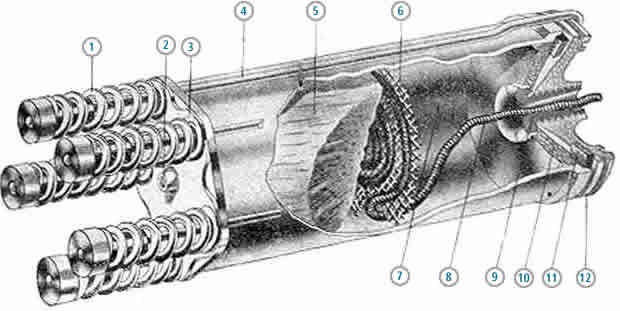 Here we cover the story of attempts, both successful and unsuccessful, to power models using micro rocket propulsion. This story begins near the start of the last century and still continues into this third millenium.
Here we cover the story of attempts, both successful and unsuccessful, to power models using micro rocket propulsion. This story begins near the start of the last century and still continues into this third millenium.
Although the golden years of Jetex form a large part of our story, we also recount other efforts, both earlier and later, to achieve, and take advantage of, micro rocket propulsion. In particular, we tell how the introduction of Rapier motors has revitalised the flying of model aircraft designed for this form of motive power.
- Pre-Jetex Pioneers pays tribute to those who led the way with their valiant attempts to make use of existing forms of rocket power to propel model aircraft aloft.
- The Path to Jetex tells how the Wilmot brothers joined forces with Joe Mansour to form a creative partnership unique in the annals of model manufacturing.
- The Jetex Heyday records the full flowering of micro rocket propelled modelling – and not just the modelling of aircraft. We show how the imagination of designers, both professional and amateur, led them to explore the potential of Jetex power for all types of vehicles. In the field of model aircraft, though, this was the era in which designers and flyers, in an atmosphere of friendly but determined competitiveness, produced outstanding results in design and flight. We record and illustrate their achievements.
- From Heyday to Hard Times tells how the heyday continued for a time under other manufacturers. Gradually, however, troubling trends emerged – interest in micro rocket modelling was declining and the Jetex brand fell into the hands of less committed owners. The commercial production of Jetex motors and models came to an end.
- The Micro Rocket Revival looks at the current scene, where a number of new initiatives have produced a revival of enthusiasm for the unique appeal of this activity.
- Our subjects in this history are not just the engineering and design achievements, but also the people whose inventiveness, energy and resolve to pioneer new paths in model and motor design made possible those achievements. You will find the stories of the most notable among them in our Hall of Fame.


